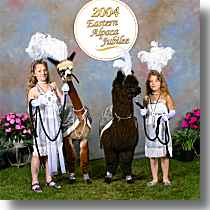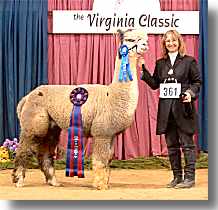| Keeping alpacas enables us to
actively manage our investment, and work together as a family to achieve our
goals, and to that end our
foundation females were chosen very carefully. At the very least, each of our
girls is either an award-winner in her own right, is bred to a multiple
award-winning male, has produced award-winning offspring, or is the daughter of
an award-winning herdsire. Our colorful herd contains some of the top bloodlines
in the country, including Accoyo Felix, Accoyo Yupanqui, Accoyo Camilio, Accoyo
Victor, Peruvian Platinum, Danko, 5Peruvian Silverado, PPPeruvian Kenamori
Gold, Cisco Kid, SA Silverado, The Silversmith, PPeruvian
Leon, 4Peruvian Black Magic, CPeruvian Jaxon, CPeruvian Black Hawk, Macintosh, Fantasy's Gremlin, 5Peruvian Chinchero,
Mr.
President, Patagonia's Ulysses, Pperuvian Guellermo, Majestado of Peru,
Peruvian Presidio / Caligula and 5Peruvian Camelot, in
addition to some rare and lesser known colored bloodlines, such as Lanark's Obsession
(deceased), Acero Marca's Evarado and Hacuna Matata. |
 |

